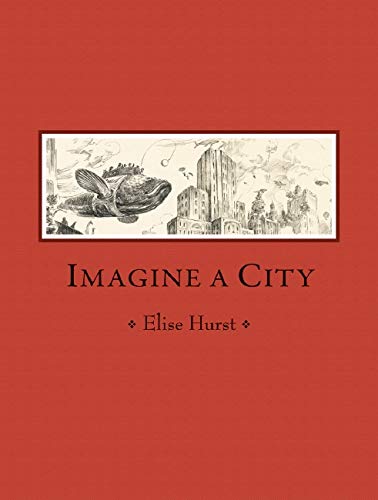Hurst invites the reader to explore a city of her imagining, through the persona of a child being taken on a Grand Tour. The endpapers resemble toile wallpaper, using wispy pen strokes and hatching to convey the winds that will blow the travellers, and the reader, from one adventure to another through the book.
The pen and ink on cream-coloured paper conveys the dreaminess of this excursion and recalls the nineteenth century sketchbooks essential to tourists of that period. Setting many of the images with plenty of space around them contributes to the reader’s feeling of floating in time and space and enables close examination of the images where humans and animals co-exist.
Hurst plays with time as well as space. The characters travel on a Victorian era train. They are sightseeing on a sidewalk with the Chrysler Building near the Tower of Babel. The mask of Tutankhamun appears. There is a flying fish tour bus overhead. There is more than a hint of Mary Poppins featured in the adult who has charge of the two children and the flying umbrellas. The walls of the art gallery and shelves of the bookshop affirm the power of imagination, which is literally encapsulated in the final image of a crystal ball held and offered by the artist.

